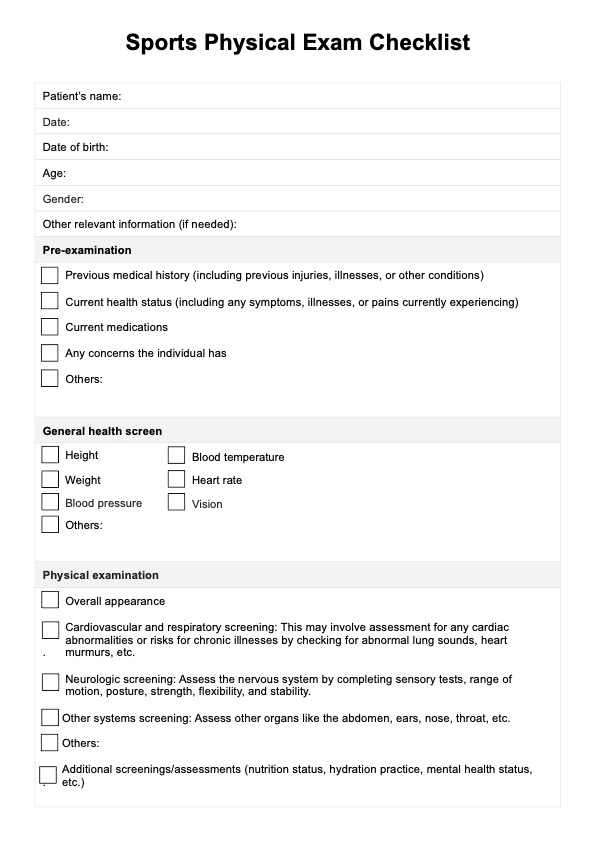During a sports physical exam, a medical professional or sports physician may collect information regarding the patient's previous medical history using a sports physical form. A physical exam will then follow this to determine their current health status and identify any risks or concerns that may preclude their participation.

Sports Physical Exam Checklist
Learn more about the importance of a Sports Physical Exam Checklist and receive a free resource and example!
Use Template
Sports Physical Exam Checklist Template
Commonly asked questions
A sports physical exam is usually conducted annually or before a sports event. However, individuals at higher risk of developing severe illness or injury may require one more frequently.
A physical exam typically takes 30 to 45 minutes. However, this can vary depending on the sport, the individual's health status, and whether further testing is required.
EHR and practice management software
Get started for free
*No credit card required
Free
$0/usd
Unlimited clients
Telehealth
1GB of storage
Client portal text
Automated billing and online payments











